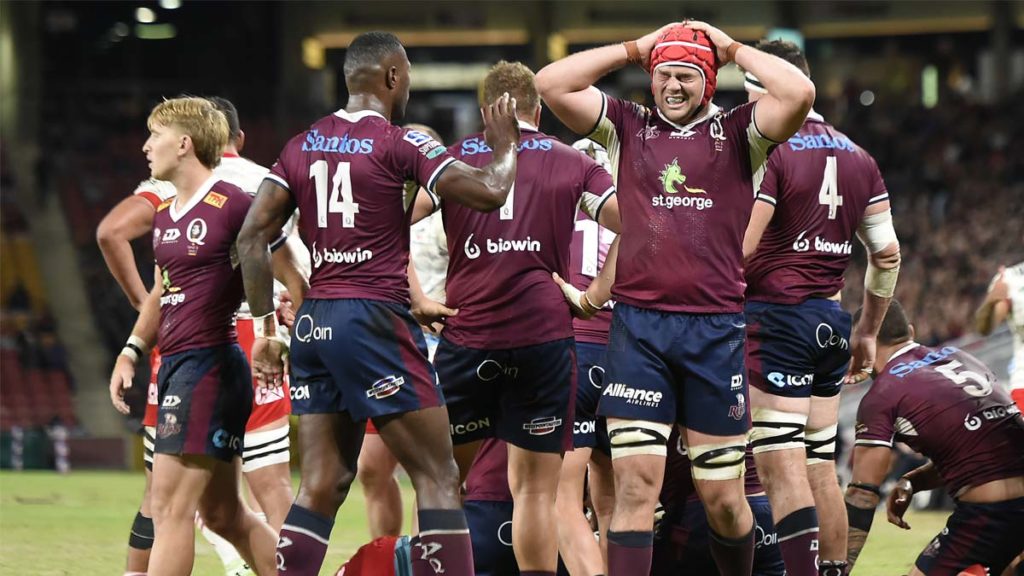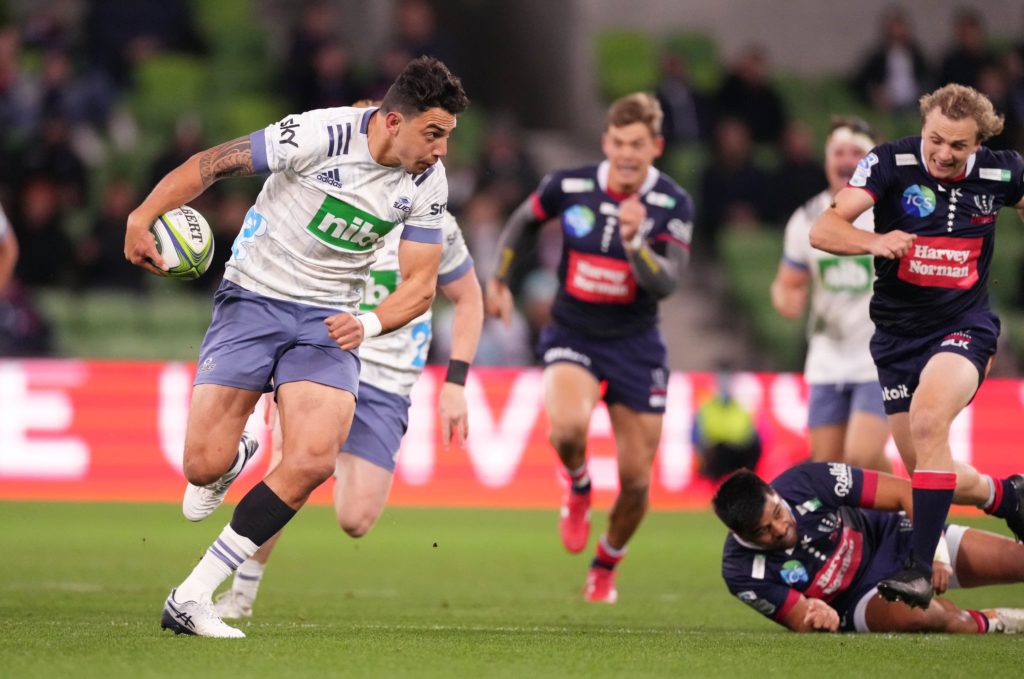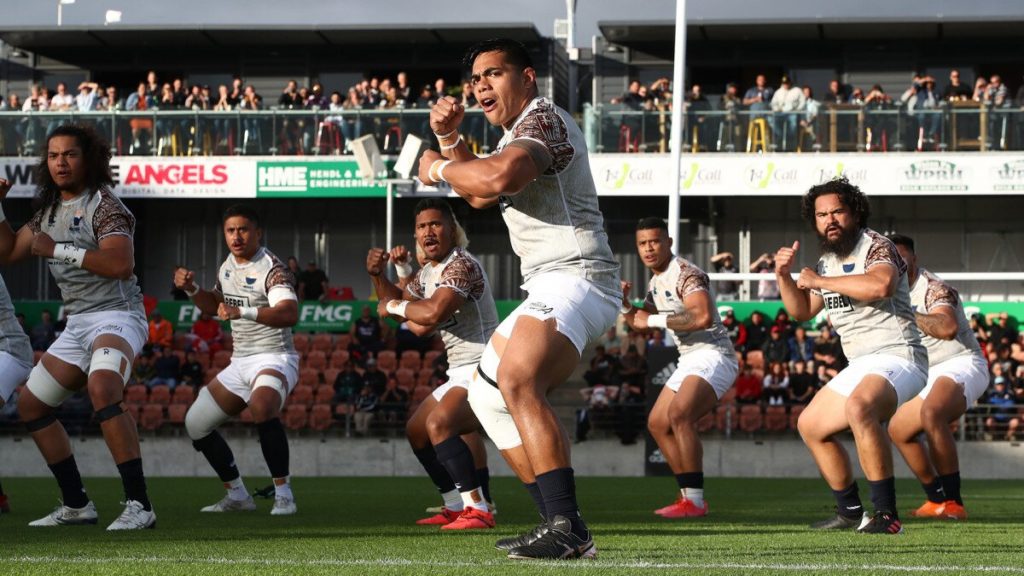Super Rugby Trans-Tasman was billed as a welcome break for New Zealand’s top players from squaring off against one another week-in and week-out.
Eight rounds of highly competitive, highly attritional rugby was starting to take its toll and while there’s certainly a contrast between how the likes of the Blues and the Crusaders go about their business, there’s still a distinctly Kiwi flavour to how all five franchises approach the game.
The Australian teams were expected to bring something different to the mix and while few anticipated too much in the way of consistently competitive rugby, the opening two rounds of Super Rugby Trans-Tasman have so far failed to live up to even the most pessimistic of predictions.
Last week’s whitewash was partially overlooked due to the somewhat challenging draw dished out to Australia’s top sides, with the Reds and Brumbies both asked to play away from home.
The Crusaders’ comprehensive thrashing of the Reds in Queensland last night, however, has effectively confirmed how big the gulf now is between the New Zealand and Australian sides.

The ledger reads 10 and zero in New Zealand’s favour, with the Kiwi franchises managing 23-point victories, on average, in the latest round of the competition.
Super Rugby AU was supposed to have injected Australia’s teams with newfound confidence. No longer were they losing week after week (except, of course, the struggling Waratahs).
What the opening two rounds of Super Rugby Trans-Tasman have confirmed, however, is that confidence is considerably less important than experience.
Diamonds are forged under pressure and what’s become apparent is that the pressure applied in Super Rugby AU pales in comparison to what the NZ franchises faced in the Aotearoa competition.
It’s a lesson the Stormers learned in 2016 when they progressed through the Super Rugby regular season without having to face any Kiwi teams.
We didn’t know what to expect and what the Chiefs hit us with in the quarter-final was a level above what we were used to.
Stormers coach Robbie Fleck after his side’s 60-21 loss in the 2016 Super Rugby finals
Come their home quarter-final against the Chiefs, they couldn’t keep up with the pace and skill of their travelling opposition, conceding a mammoth 60 points.
“We didn’t know what to expect and what the Chiefs hit us with in the quarter-final was a level above what we were used to,” Stormers coach Robbie Fleck acknowledged following the game.
“They really played well in that game and they asked a lot of questions that we could not answer.”
The format for next year’s competition is still up in the air but the opening two weeks of this year’s Trans-Tasman tournament have confirmed that the set-up adopted this season is not appropriate moving forward.
It was never billed as the solution moving forward but comments from Rugby Australia chairman Hamish McLennan ahead of Super Rugby Trans-Tasman suggested that it was something that needed to be weighed up.

“I’ve always liked the local component and believe it’s something we should give serious consideration to, in conjunction with Trans-Tasman,” McLennan told the Sydney Morning Herald. “It’s reminiscent of our original thinking around local derbies and replicating some of the success of the Big Bash. That was proven [in the AU final] on Saturday night.
“Trans-Tasman is the future but there are lessons from this.”
If long-term success at the highest level of the game is the goal then there needs to be regular cross-overs between the Australian and New Zealand sides.
Eight or more rounds of derbies will simply harden up the Kiwi franchises and while it may instil some confidence in the top performing Australian teams, it’s creating a false standard for them to aspire to.
To be the best, you need to be regularly playing the best – and the Reds aren’t likely to find regular Trans-Tasman success if they’re stuck warming up against the Waratahs and Rebels.
My preferred competition is trans-Tasman, five and five, and I even received a call last night from London from powerful backers wanting to invest in the competition.
RA chairman Hamish McLennan has made Australia’s position clear on the future of Super Rugby
There’s no obvious solution to the issue at present, however.
A 12-team, 11-round competition next year will likely breed similar results to what we’re seeing in Super Rugby Trans-Tasman and while AU hasn’t helped improve the Australian clubs’ standards relative to their Kiwi rivals, it was still overall an evenly-matched playing field and an enjoyable experience for fans.
Viewership was up in Australia because Australian teams were winning every weekend. If those fans are forced to face two or three years of mediocrity as their teams adjust to their NZ opposition, they won’t still be around when that level is finally reached.
The deck instead needs to be stacked in favour of the Australian sides – at least for now.
If the competition is split into two conferences – one Australian and one New Zealand, the draw can be structured such that there are regular derby matches and regular cross-over matches, perhaps in a sixty-forty split.
There will still be frustrations with a draw that effectively favours Australia, but it’s likely the only solution that still accommodates the current teams.

RA have unequivocally said that they want to have all five of their teams involved in any venture moving forward – despite NZR trying to strong-arm the Australian union.
In July of last year, NZR suggested they’d look to move forward with an eight or 10-team competition involving all five Kiwi franchises, one Pacific Island side, and two to four teams from Australia.
“The expression of interest I’m not interested in and if they send it over, I won’t open it,” McLennan told the Sydney Morning Herald at the time.
“My preferred competition is trans-Tasman, five and five, and I even received a call last night from London from powerful backers wanting to invest in the competition.”
RA can’t afford to keep their own players in Australia at present, which means luring offshore players to the country will require some sizeable outside investment.
It was a bold – some would say reckless – play from the New Zealand union and although their idea had merit, especially based on the matches over the past two weekends, the way they went about their business likely curtailed the plan right from the get-go.
Australia wanted to be an equal partner in the decision-making process, not some afterthought – which is likely how they felt given the way NZR’s idea was proposed.
Questions rightly remain whether Australia has the player numbers to justify five teams but it’s what RA have committed to and will hold firm on, due to New Zealand’s negotiation ‘tactics’ last year.
Perhaps that means bringing in more foreign talent – but RA can’t afford to keep their own players in Australia at present, which means luring offshore players to the country will require some sizeable outside investment.
One way or another, something has to give – and there’s no obvious solution to the problem at present, which doesn’t bode well for next year’s competition.


Comments
Join free and tell us what you really think!
Sign up for free